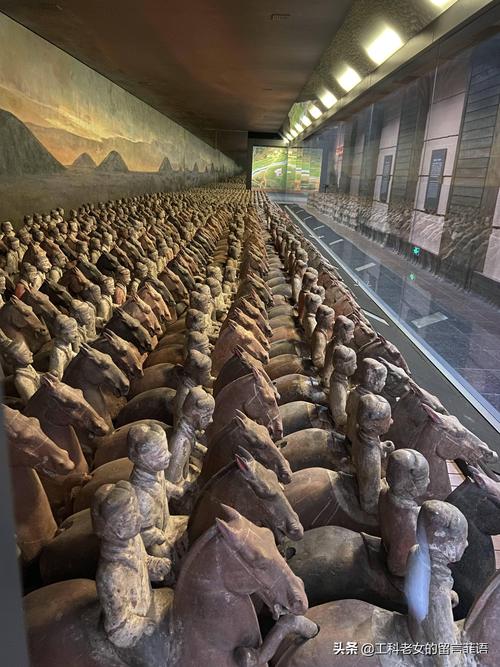
The Terracotta Army: Guardians of an Emperor's Afterlife
A Monumental Discovery
In 1974, a group of farmers digging a well in Xi'an, China, stumbled upon one of the most significant archaeological discoveries of the 20th century: fragments of life-size terracotta figures. This chance discovery unearthed the Terracotta Army, a vast necropolis built to accompany Qin Shi Huang, the first emperor of a unified China, into the afterlife.
The Army's Composition
More than just soldiers, the Terracotta Army is a meticulously crafted representation of Qin Shi Huang's imperial guard, intended to protect him in the afterlife. The army comprises an estimated 8,000 soldiers, each with unique facial features, hairstyles, and armor, showcasing the incredible skill and artistry of the Qin dynasty craftsmen.
Beyond the infantry, archaeologists have also unearthed:
- Chariots and horses: Over 130 chariots, each drawn by four terracotta horses, add to the army's grandeur and military might.
- Cavalrymen: Mounted soldiers, ready for battle, further diversify the army's ranks.
- Acrobats and Musicians: Figures of entertainers offer a glimpse into the courtly life and rituals of the Qin dynasty.
The Emperor's Tomb: Still Shrouded in Mystery
While the Terracotta Army has yielded invaluable insights into ancient Chinese civilization, the tomb of Qin Shi Huang himself remains largely unexcavated. Historical records describe a lavish burial chamber containing a map of his empire with rivers of flowing mercury. However, due to concerns about potential damage to the tomb and its contents, archaeologists have chosen to proceed cautiously, leaving the inner sanctum of the emperor's resting place yet to be fully revealed.
A Legacy of Power and Artistry
The Terracotta Army stands as a testament to the power and ambition of Qin Shi Huang, who sought to rule not only in life but also in death. The sheer scale of the project and the meticulous detail of each figure showcase the incredible skill and artistic talent of the ancient Chinese. Today, the Terracotta Army remains one of the most popular tourist destinations in China, captivating visitors with its grandeur and offering a glimpse into the splendor and sophistication of a bygone era.
Q&A
1. When was the Terracotta Army discovered?
The Terracotta Army was discovered in 1974 by farmers digging a well.
2. Besides soldiers, what other figures are part of the Terracotta Army?
The Terracotta Army also includes chariots and horses, cavalrymen, acrobats, and musicians.
3. Why hasn't Qin Shi Huang's tomb been fully excavated?
Archaeologists are proceeding cautiously with the excavation of the tomb due to concerns about potentially damaging the burial chamber and its contents.
note: This return of all, without the author's permission, may not be reproduced